Gassho-zukuri houses in Gokayama
Gokayama may give you the impression of a peaceful and original Japanese landscape, but it was actually a military base where gunpowder was produced under the floors of Gassho-zukuri houses!
“Gokayama” is a deep and rugged mountainous region located in the middle reaches of the Sho River, at the southwest tip of Toyama Prefecture (the border between Gifu Prefecture and Ishikawa Prefecture). Gokayama is a general term for 40 small villages and it is called Gokayama because it has 5 valleys (“go” means five and “yama” means mountain in Japanese). In Gokayama, there is a legend (end of the 12th century) that Heike refugees who were defeated by Yoshinaka Kiso (a cousin of Minamoto no Yoritomo and Yoshitsune) settled there, and also a legend that the 98th Emperor Chokei escaped (end of the 14th century). In the Edo period (from the 17th century), it functioned as a military base and as a penal colony for the Kaga Domain (now Ishikawa and Toyama prefectures).
<Gassho-zukuri house of Gokayama>
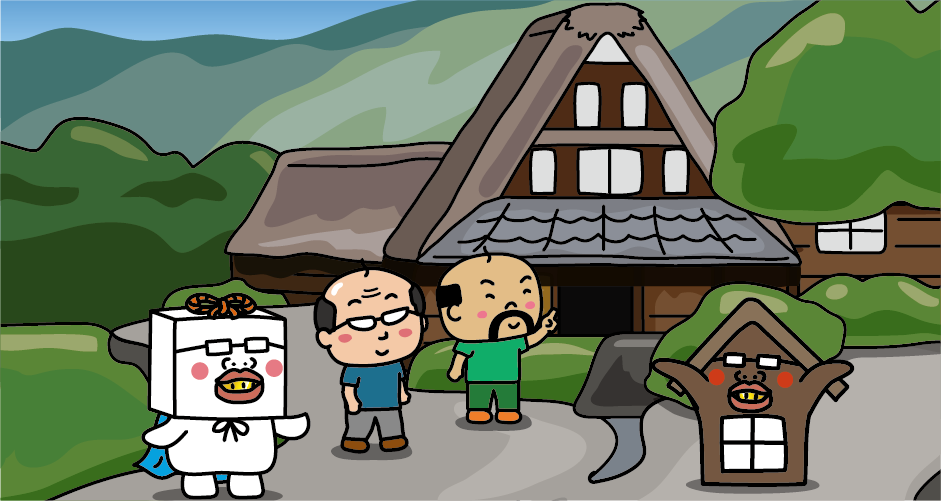
Gokayama is famous for its unique Gassho-zukuri thatched roof houses (“Historic Villages of Shirakawa-go and Gokayama”). Suganuma Village and Ainokura Village in Nanto City are registered as “World Cultural Heritage Sites” along with the Ogimach, Shirakawa Village in Shirakawa-go. Gokayama is very attractive because untouched nature still remains.
<Iwase House Residence>

The “Iwase House Residence” is the largest Gassho-zukuri house in Gokayama and Shirakawa-go. It is a 5-story thatched house built about 300 years ago. The 3rd to 5th floors were used as workplaces for sericulture. More than 30 families lived here until the Meiji period, engaged in the core industry of sericulture. In addition, as it was the official residence for supplying the Kaga Domain with the gunpowder produced in Gokayama, it has the splendid interior made entirely of zelkova. It is designated as a national important cultural property. This residence is still inhabited, but you can tour the inside.
<Salt Nitrate Highway>
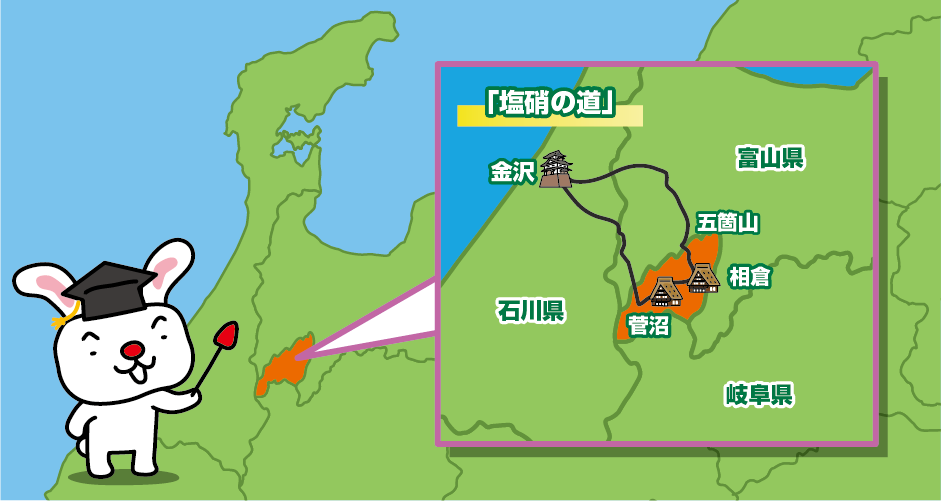
Potassium nitrate is a raw material for black gunpowder, matches, and fireworks. In Japan, potassium nitrate is called “ensho”, which is literally written as “Flame nitrate (焔硝)”. During the Edo period, the Kaga Domain produced potassium nitrate (ensho), the raw material for black gunpowder in Gokayama. The Kaga Domain, which was a Tozama Daimyo*, secretly produced potassium nitrate (ensho) due to its relationship with the Tokugawa shogunate. In the Kaga Domain, potassium nitrate (ensho) was written as “Salt nitrate”. They used the character “塩 (salt)” instead of “焔(flame)”so that they could ostensibly produce it as “salt”. Both Salt and Flame are pronounced “en” in Japanese. Potassium nitrate was transported to Kanazawa using a mountain road not even on a map called the “Ensho no Michi (Salt Nitrate Highway)”, and in Kanazawa, it was mixed with sulfur and charcoal to produce black gunpowder. Since Gokayama was a penal colony for the Kaga Domain and was also an “isolated land island” that was isolated from other areas by mountains and valleys, it was perfect place to produce potassium nitrate (ensho) in secret.
*Tozama Daimyo is the Daimyo feudal lord who served the Tokugawa family after the Battle of Sekigahara (1600). The Tokugawa shogunate was vigilant because some of them were Great Daimyos (Feudal Lords) such as the Maeda family (Kaga Domain), the Shimazu family (Satsuma Domain) and the Date family (Sendai Domain).
<Under the floor of a gassho-zukuri house>

In Japan at that time, it was well known that nitrater was naturally generated under the floors of old houses. Kaga Domain (Gokayama) systematically produced nitrate while other domains collected it from under floors. This is Aged-soil Method. A large 3.6m long hole, 1m wide and 2m deep was dug under the floor around the irori hearth, and buckwheat husks, mugwort, hemp and other hay and silkworm feces were alternately piled up in layers, and human urine was poured over them. Under the heat of the hearth, people fermented these for 4 to 5 years to produce nitrate. This is Cultural Method.
<Ensho no Yakata (Nitrate Museum)>
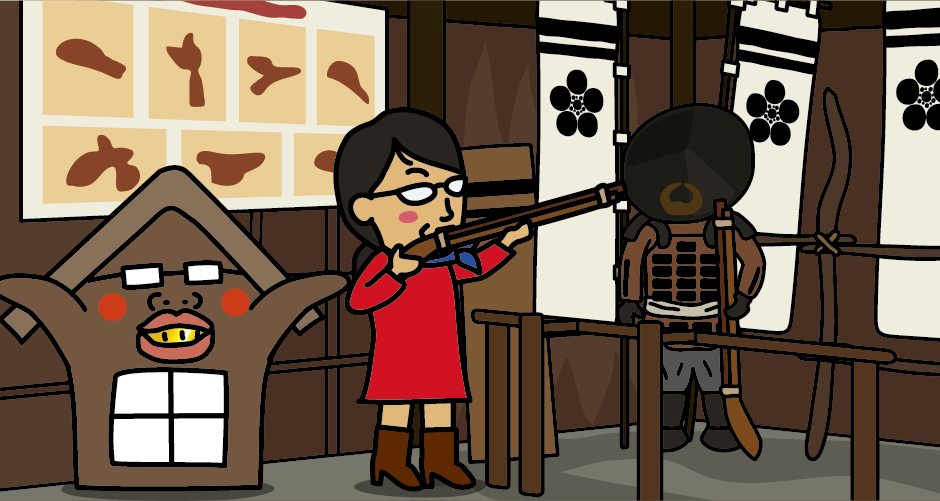
At the Ensho-no-Yakata (Nitrate Museum), you can learn how salt nitrate (ensho) is collected and shipped. Matchlock guns are also on display and you can try a simulated matchlock gun.
<Gokayama Washi no Sato>
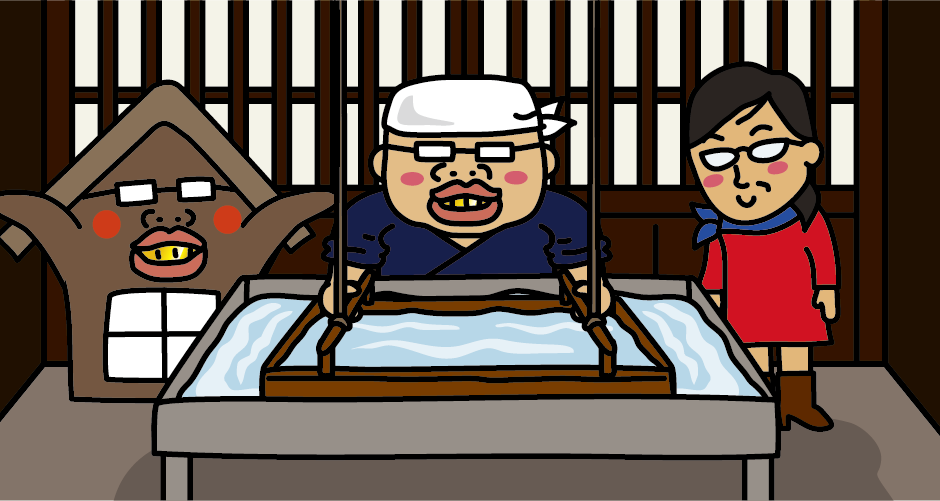
“Gokayama Washi no Sato” attached to “Michi-no-Eki Taira” introduces the history, manufacturing process, and products of Gokayama Washi paper, which is one of basic industries in Gokayama. You can experience making Washi paper.
<Gokayama Tofu>
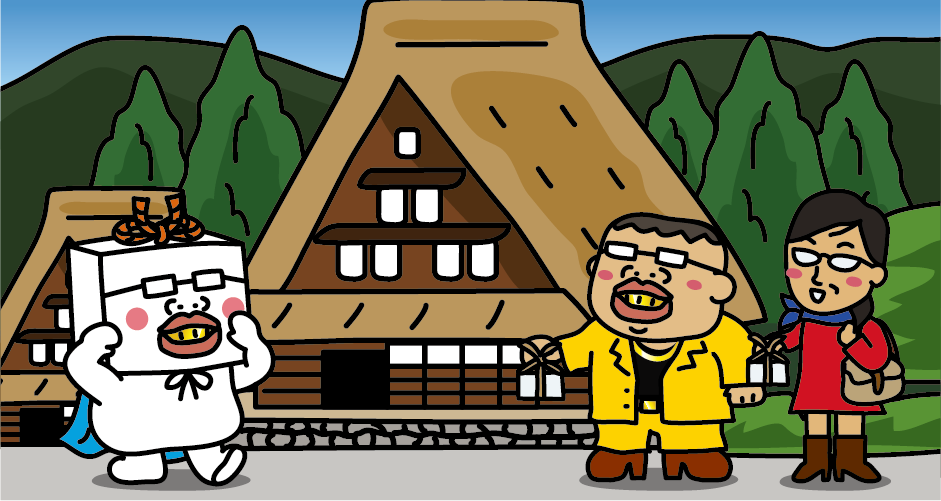
In Gokayama, you can experience “Gokayama tofu” making with the clear water of Gokayama and local soybeans. Traditional “Gokayama tofu” is hard tofu that does not lose its shape even when tied with a rope. There are shops and restaurants that sell Gokayama tofu.
<Kago no Watashi>
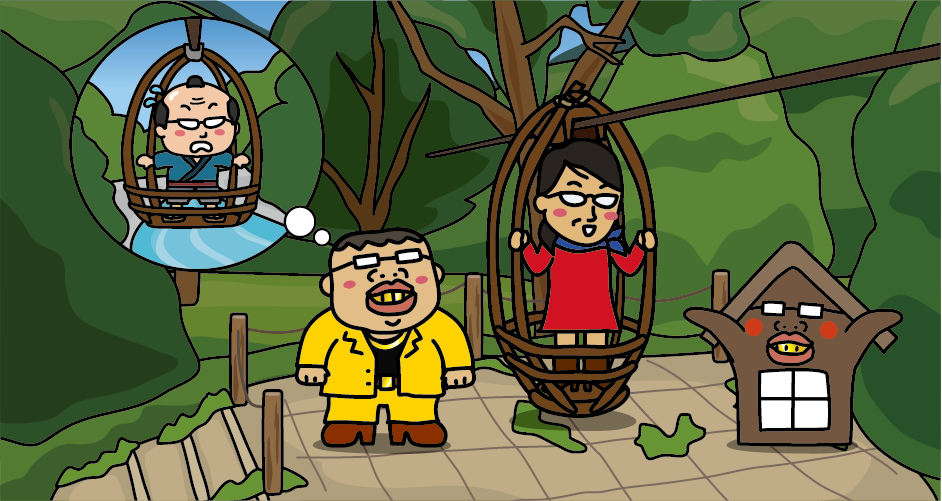
Since Gokayama was once a penal colony of the Kaga Domain, it was not possible to build a bridge. When crossing the river to the opposite bank, they stretched out a rope made of vines and rode in a basket to cross the river. Suganuma village has an exhibition of “Kago no Watashi”, an ancient method of crossing the river similar to a primitive cable car.
Access to Gokayama
[Railway]
From Tokyo
It takes about 3 hours from JR Tokyo Station to JR Shin-Takaoka Station by Hokuriku Shinkansen. From JR Shin-Takaoka Station take a World Heritage bus for about 1 hour to Ainokuraguchi bus stop and a World Heritage bus for about 1 hour 15 minutes to Suganuma bus stop. * About two hours from JR Shin-Takaoka Station to Shirakawa-go by World Heritage Bus.
From Osaka
It takes about 1 hour and 20 minutes from JR Osaka Station to JR Tsuruga Station by JR Tokaido Main Line (limited express). Transfer to the Hokuriku Shinkansen at JR Tsuruga Station and get to JR Kanazawa Station in about 40 minutes. Get off at JR Kanazawa Station and from JR Kanazawa Station take the highway bus (reservation required) to Gokayama (Suganuma). Alternatively, it takes about 1 hour by Hokuriku Shinkansen from JR Tsuruga Station to JR Shin-Takaoka Station. From JR Shin-Takaoka Station take a World Heritage bus for about 1 hour to Ainokuraguchi bus stop and a World Heritage bus for about 1 hour 15 minutes to Suganuma bus stop. * About two hours from JR Shin-Takaoka Station to Shirakawa-go by World Heritage Bus.
[Airplane]
From Tokyo
It takes about 1 hour from Haneda Airport to Toyama Airport. It takes about 30 minutes from Toyama Airport to Toyama Station by local bus. Transfer to the Ainokaze Toyama Railway Line at JR Toyama Station and it takes about 20 minutes to JR Takaoka Station. From JR Takaoka Station you can take a World Heritage bus to Ainokuraguchi bus stop in about 1 hour 15 minutes, and a World Heritage bus to Suganuma bus stop in about 1 hour 30 minutes. Alternatively, it takes about 1 hour from Haneda Airport to Komatsu Airport. It takes about 40 minutes from Komatsu Airport to JR Kanazawa Station by shuttle bus. It takes about 1 hour from JR Kanazawa Station to Gokayama (Suganuma) by highway bus (reservation required).
From Fukuoka
It takes about 1 hour and 30 minutes from Fukuoka Airport to Komatsu Airport. It takes about 40 minutes from Komatsu Airport to JR Kanazawa Station by shuttle bus. It takes about 1 hour from JR Kanazawa Station to Gokayama (Suganuma) by highway bus (reservation required).

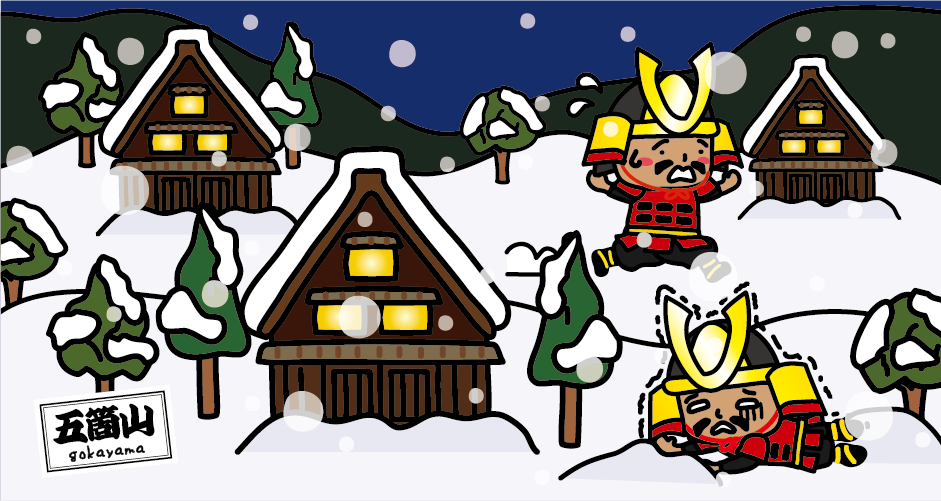



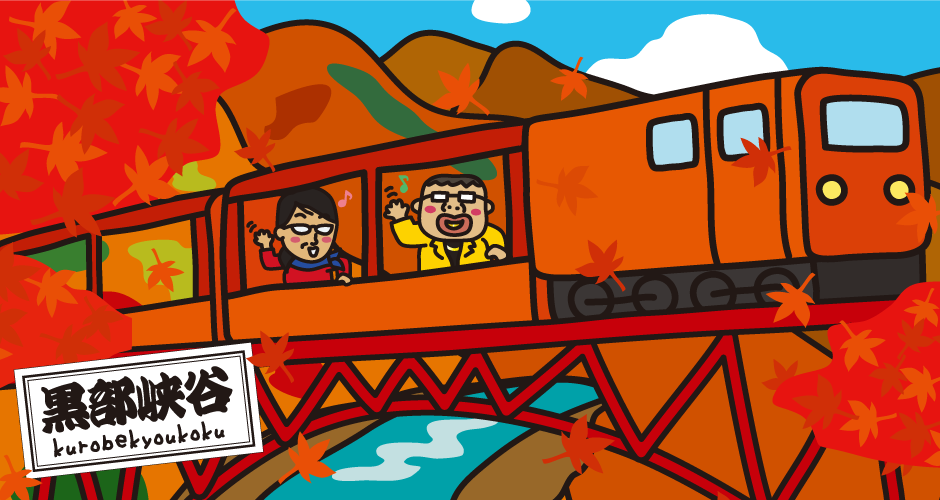

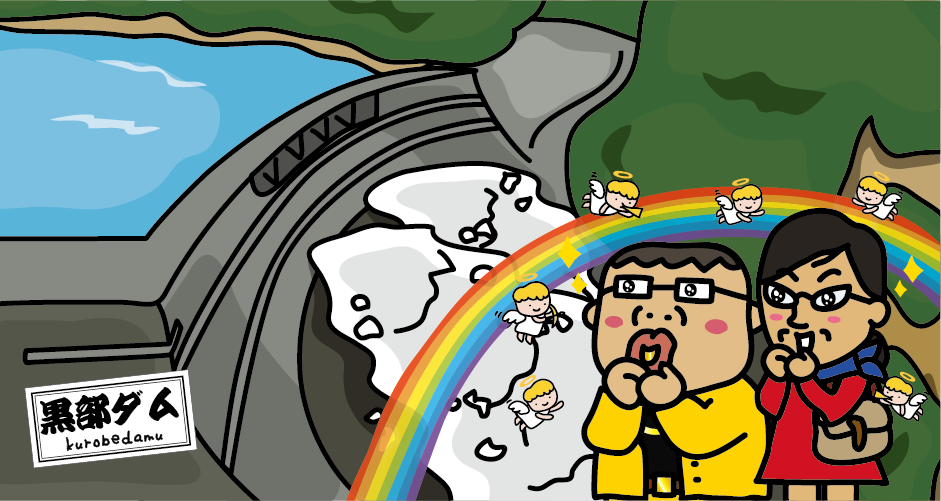


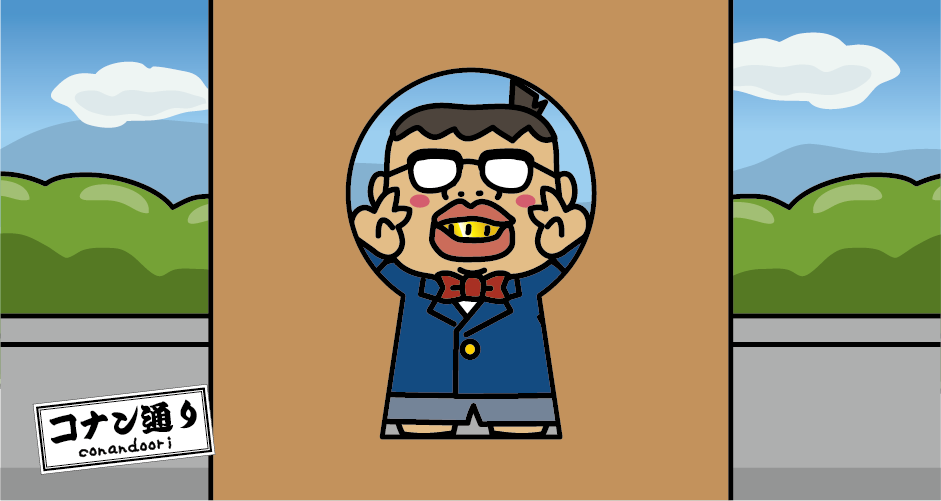


You need to login to comment on an article.